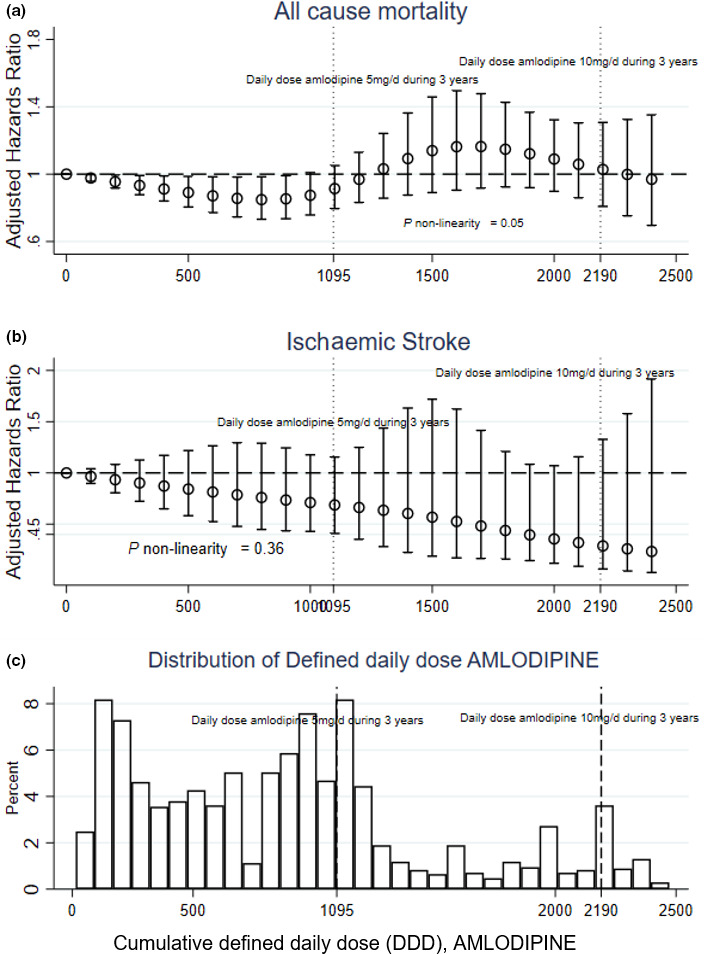Fig. 3.

Amlodipine dose‐dependent hazard for death and ischaemic stroke calculated using Cox hazard regression models in AD patients for (a) mortality, (b) ischaemic stroke, and (c) histogram representing proportion of patients prescribed each cumulative defined daily dose. Hazard ratios (HR) and 95% confidence intervals (CI) for death and ischaemic stroke associated with cumulative defined daily dose (cDDD) of amlodipine. The defined daily dose (DDD) of a medication is defined by the World Health Organization and is the assumed average maintenance dose per day for a drug used for its main indication in adults. In the case of amlodipine, 1 DDD corresponds to 5mg per day. A patient taking 5mg per day of amlodipine during 1 year would have a cDDD of 365, and 1095 cDDD if this same dose was continued for 3 years. Vertical dotted lines mark the equivalent DDD resulting from 5mg of amlodipine during 3 years and from 10mg amlodipine during 3 years. Model adjusted for propensity score. The risk associated to amlodipine was modelled using linear splines with knots at fixed values of cDDD distribution (550, 1095, 1645, 2190). Estimates were adjusted for propensity score and Mini‐Mental State Examination measurements at baseline. cDDD = 0 was used as reference. (a) All‐cause mortality, (b) ischaemic stroke, (c) distribution of patients taking each cDDD during 3 years. A dose effect is evident at increasing cDDD of amlodipine up to the equivalent of 1DDD per day during 3 years. At higher doses, the effect is lost, possibly due to reduced sample size as is evident in the histogram (c).
